Genre: Action Developer: Taito Publisher: Taito Players: 1 Released: 1992
I’ve always been a fan of Taito’s Rastan games. I used to plug quarters into the original like there was no tomorrow, and I still won’t rest until I’ve beaten the awesome Master System version. Part three, Warrior Blade, is a game that I’ve finally been able to play thanks to MAME, and I’ve enjoyed it quite a bit. Ironically, I had never really spent that much time with the second game, Rastan Saga II (Nastar Warrior outside the U.S.) , the only one of the series that actually made it to the Genesis (I still think Warrior Blade would have made a great Sega CD or 32X port!). Being this the age of cheap Genesis games on eBay, I decided that it was time to right the situation.
When Rastan Saga II first appeared in arcades, I was kind of turned off by the visuals. The main character doesn’t really look anything like the Conan-esque hero of the original, and the massive sprites seemed out of place. It just didn’t seem to click with me. The Genesis port was the same, and while nothing’s changed for me in this regard, I can at least recognize that the home version is pretty darn faithful to its arcade source. That’s a good thing, at least, and it actually bodes well for someone who’s trying to get into this middle chapter of the Rastan mythos.
Interestingly enough, the visuals aren’t bad at all, just… different from the rest of the series, and they actually hide a game that plays very much like the original I loved so dearly. Rastan Saga II is a hack-‘n-slasher with some minor platforming elements, and there’s nothing complicated about it – just how I like my hack-‘n-slashers. Even the plot is bare bones: A “wicked group” has attacked the skyscraper, which is the center of power in Rastan’s world, and you must now go and cut them all to pieces in the name of justice. End of story… literally.
The gameplay follows suit, and there’s nothing about it that has significantly advanced since the original cut a swath through arcades in 1987. You still swipe at enemies around you, and you still jump from platform to platform to pass over pits and other deadly obstacles. Attacking has had a minimal upgrade, and Rastan can now do low attacks, as well as use his new shield to protect himself from attacks from above. The are a few scant power ups to be had in the form of crests, such as a life refill and a one that eliminates every foe onscreen, but relying on them is a wasted effort, as they’re in short supply and never really seem to be there when you need them.
As in the original, there are other weapons to use, including a massive broad sword and Wolverine-like claws. These weapons can’t be upgraded, but your character can by beating bosses and getting the Wise Man Stone. The problem is that you probably won’t last long enough to make him powerful in any meaningful way, and you’re going to spend most of the game using the standard sword and shield at level one, unless you’re really eager to master every nuance of every level. If you’re willing to dedicate that much time to Rastan Saga II, then chances are that you probably aren’t even reading this review.
While Rastan still has all his basic moves, he seems to be a bit stiff in his old age, and jumping can be a chore sometimes, not that he was exceptionally limber in the first game. There are stages that require you to make tight jumps while avoiding invincible enemies or fire streams, and the precision required is occasionally more than ol’ Rastan is able to muster. It’s not something a little practice can’t overcome, but the scant continues offered means you’ll have to learn each stage’s layout if you want to get through to the end.
Basically, if you liked the original then Saga’s gameplay should be right up your alley. Just be sure to get past the horrible new Rastan sprite to enjoy it all. Why Taito went and changed him I don’t know, but he just looks wrong to me. Everything else looks great, and the environments are nicely colored and very detailed. Enemies look great as well, and many of them still share the Greek mythology theme of the original. The Genesis does a great job of converting the coin-op, and the home version is almost dead-on, aside from the reduced color palate and the loss of some minor details. It’s a shame that the soundtrack doesn’t match the visuals (it’s nowhere close to the greatness of the original’s score), and while it pales before the arcade music, it compliments the graphics decently enough.
My biggest gripe has to be the lack of the two-player mode. Originally, another player could take on the role of a more tanned Rastan (Nastar, perhaps?) and fight alongside a friend. The Genesis ports lacks this, and the adventure is now a single-player affair. Considering how good a job Taito did with this port otherwise, such a glaring omission is truly unfortunate.
To those still on the fence about a potential purchase, it all boils down to what you’re expectations are for a Rastan sequel. If you’re a Rastan fan, or even if you’re just looking for another decent hack-‘n-slash for your Genesis, then Rastan Saga II is worth checking out. It shouldn’t cost you more than a some change for a full copy, and it’s fun enough to spend an afternoon or two with. Those seeking something deeper should search elsewhere, but they’d be missing out on some simple fun.
SCORE: 5 out of 10

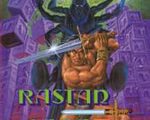
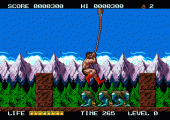
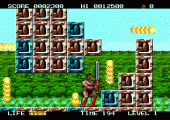
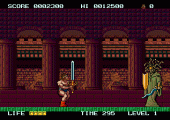
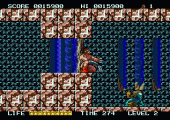
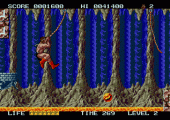
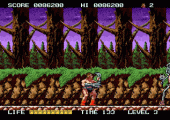
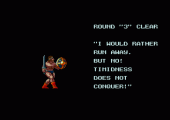
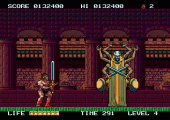
Recent Comments